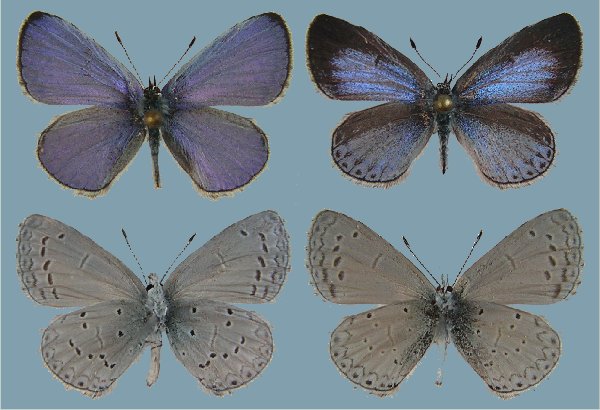Celastrina ladon echo

Photo Life History: Celastrina ladon echo
Habitat: Mountain Canyons; Mountain Hilltops
Host Plants: Prunus virginiana; Ceanothus velutinus; Eriogonum racemosum
Suitable Lab Host Plants:
Caring for Live Female Butterflies: Nectaring techniques
Methods of Female Oviposition: Open Screen Cages; Small Squat Tub; Twin Cup Method (Sometimes females can be finicky about laying eggs in the lab. I was able to get one female to oviposit on Astragalus spp. I also noticed a female in Northern California paying close attention to Lupinus spp.)
How to Find Eggs: Look on Flower Stems; Look on Flower Buds.
How to Hatch Eggs: Separate eggs individually.
How to Find Caterpillars in the Field: Mimicry and Camouflage. Oddly enough, in Northern Utah, we have only had limited success finding caterpillars on Eriogonum racemosum blooms in Juab and Sevier Counties in August. I've not been able to locate larvae on Prunus virginiana and Ceanothus velutinus even though Nicky Davis did find one larva on the Ceanothus velutinus.
How to Find Pupae in the Field:
Larva to Pupa: Larva Changes Color.
Caterpillar setups: Open terrariums; Closed Container--Because cannibalism is a concern with this and other lycaenid larvae, it is best to separate them out either in a open terrarium setup. You have more control in a closed container; but it also is more work.
Overwintering Strategies: Your Own Backyard; Refrigerator
Number of Broods per Year: 1-2
Overwintering Stage: Pupa.
Overwintering Strategies: Your Own Backyard; Refrigerator
Post-Hibernation Strategies: Pupae should be exposed to warmer temperatures, long-day photoperiod and mist sprayed with water;
Avoiding Diapause Techniques: Healthy Host Plant; Expose larvae to 24 hours of light.
Disease Prevention: Change out host plant and remove frass every day in a closed container; every four days or so in an open terrarium setup.
Emergence: Emergence Container
Field Notes:

